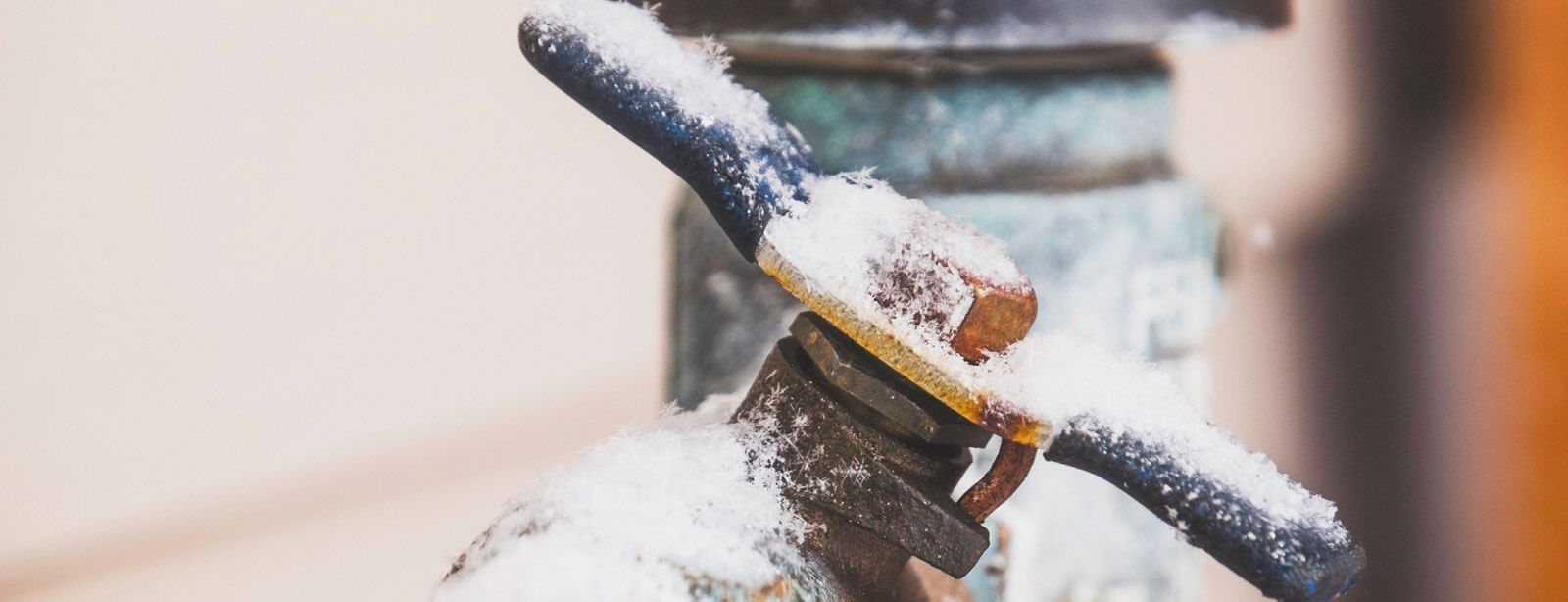They are making a few good points on the subject of Helpful Tips to Prevent Frozen Pipes this Winter in general in this content on the next paragraphs.

Cold weather can wreak havoc on your plumbing, specifically by freezing pipes. Here's how to prevent it from taking place and what to do if it does.
Introduction
As temperature levels decline, the threat of frozen pipes boosts, potentially causing expensive repair work and water damages. Understanding how to prevent icy pipes is important for home owners in cold environments.
Prevention Tips
Insulating at risk pipes
Cover pipelines in insulation sleeves or use heat tape to secure them from freezing temperature levels. Concentrate on pipes in unheated or outside locations of the home.
Heating strategies
Keep interior rooms effectively heated, particularly areas with pipes. Open up closet doors to enable warm air to circulate around pipes under sinks.
How to determine icy pipelines
Seek decreased water flow from faucets, unusual odors or noises from pipelines, and noticeable frost on revealed pipelines.
Long-Term Solutions
Structural modifications
Think about rerouting pipes away from outside walls or unheated areas. Include additional insulation to attic rooms, basements, and crawl spaces.
Upgrading insulation
Invest in premium insulation for pipelines, attic rooms, and wall surfaces. Appropriate insulation assists preserve constant temperatures and reduces the risk of icy pipelines.
Safeguarding Outside Plumbing
Yard pipes and exterior taps
Disconnect and drain garden hose pipes before winter season. Mount frost-proof faucets or cover exterior taps with insulated caps.
Comprehending Icy Pipes
What triggers pipes to freeze?
Pipelines freeze when subjected to temperature levels below 32 ° F (0 ° C) for extended periods. As water inside the pipes ices up, it increases, putting pressure on the pipe wall surfaces and potentially triggering them to rupture.
Dangers and damages
Icy pipelines can bring about supply of water disruptions, home damage, and expensive repair services. Ruptured pipelines can flooding homes and create comprehensive architectural damages.
Signs of Frozen Water Lines
Identifying frozen pipes early can avoid them from breaking.
What to Do If Your Pipes Freeze
Immediate activities to take
If you think frozen pipelines, keep taps available to relieve stress as the ice thaws. Utilize a hairdryer or towels soaked in hot water to thaw pipes gradually.
Final thought
Avoiding icy pipes needs positive steps and quick actions. By comprehending the causes, signs, and preventive measures, house owners can shield their pipes during winter.
6 Proven Ways to Prevent Frozen Pipes and Protect Your Home
Disconnect and Drain Garden Hoses
Before winter arrives, start by disconnecting your garden hoses and draining any remaining water. Close the shut-off valves that supply outdoor hose bibs and leave the outdoor faucet open to allow any residual water to drain. For extra protection, consider using faucet covers throughout the colder months. It’s also important to drain water from any sprinkler supply lines following the manufacturer’s directions.
Insulate Exposed Pipes
Insulating your pipes is an effective way to prevent freezing. Pipe insulation is readily available at home improvement stores and is relatively inexpensive. Pay close attention to pipes in unheated areas such as the attic, basement, crawl spaces, or garage. Apply foam insulation generously to create a buffer against the cold. You can also wrap your pipes in heat tape or thermostat-controlled heat cables for added warmth.
Seal Air Leaks
Inspect your home for any cracks or openings that could let in cold air. Seal any holes around the piping in interior or exterior walls, as well as the sill plates where your home rests on its foundation. Additionally, make sure to keep your garage door closed unless you’re entering or exiting. Leaving it open creates a significant air leak that can lead to frozen pipes.
Allow Warm Air Circulation
During cold snaps, it’s essential to allow warm air to circulate evenly throughout your home. Leave interior doors ajar to promote better airflow. Open kitchen and bathroom cabinets to help distribute heat consistently around the rooms. If you have small children or pets, be sure to remove any household chemicals or potentially harmful cleaners from open cabinets for safety.
Let Faucets Drip
A small trickle of water can make a big difference in preventing ice formation inside your pipes. When temperatures drop significantly, start a drip of water from all faucets served by exposed pipes. This continuous flow helps prevent the water from freezing. Additionally, running a few faucets slightly can relieve pressure inside the pipes, reducing the chances of a rupture if the water inside does freeze.
https://choateshvac.com/6-proven-ways-to-prevent-frozen-pipes-and-protect-your-home/

I found that content about Preventing and dealing with frozen pipes when browsing the search engines. For those who enjoyed reading our blog posting please don't forget to pass it around. Bless you for being here. Kindly check our blog back soon.
Set Up An Appointment